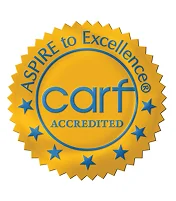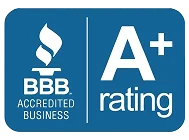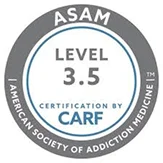Home / Drug & Alcohol Rehab Programs Across New England / Vyvanse Addiction: Abuse Signs & Treatment Options
Vyvanse Addiction Treatment
in New England
Granite Recovery Centers offers Vyvanse addiction treatment with evidence-based therapies, 12-Step support, and dual-diagnosis care. Programs include detox, residential, PHP, IOP, and outpatient options in New Hampshire and Maine.
Accreditations for Quality Care






What Is Vyvanse Addiction?
Vyvanse (lisdexamfetamine) is a Schedule II stimulant for ADHD and binge-eating disorder. Misuse can lead to tolerance, dependence, and addiction. Common red flags include taking higher doses, using without a prescription, or altering how you take it.
When these patterns appear, professional addiction treatment or rehab is often needed to regain safety and stability.
The Chemistry of Lisdexamfetamine
As the generic form of Vyvanse, lisdexamfetamine is a prodrug that converts to dextroamphetamine in the body. This gradual release lowers misuse potential but still carries a high risk for addiction.
Who Abuses Vyvanse?
Vyvanse misuse often appears in students, athletes, and professionals seeking focus or energy. Many use it to stay awake longer, study harder, or boost their performance. Anyone prescribed or experimenting with stimulants can develop an addiction, though.

Signs of Vyvanse Addiction and Misuse
- Escalating doses, crushing/snorting, or trying to inject
- Restlessness, insomnia, appetite loss, weight changes
- Anxiety, irritability, low mood, or “crash” between doses
- Doctor-shopping, hiding use, or withdrawal from family/work

Vyvanse Withdrawal and Detox
Stopping suddenly can cause a “comedown” with fatigue, low mood, sleep changes, and cravings. In medical detox, our team creates a taper or stabilization plan, monitors your health, and supports sleep, nutrition, and mood so you can transition safely into treatment.
How Long Does Vyvanse Stay in Your System?
Vyvanse is a long-acting stimulant, and traces can remain in your system for up to three days, depending on dosage, metabolism, and testing method.
How We Treat Vyvanse Addiction
Evidence-Based Therapies
Cognitive-behavioral therapy to challenge negative thoughts, dialectical behavior therapy skills for emotion regulation, MI for motivation, and trauma-informed care.
12-Step Integration and Community
Clinical therapies are combined with 12-Step involvement, peer support, and alumni programs to create accountability, daily structure, and lasting recovery.
Dual-Diagnosis Treatment
Integrated treatment addresses anxiety, depression, ADHD, and trauma alongside stimulant use. Get medication management and counseling tailored to each client.
Flexible Levels of Care
We provide a full continuum of care, including Detox, Residential, PHP, IOP, and Outpatient programs, with step-down options designed to support lasting recovery.
What to Remember in Early Recovery
- Cravings pass with time; use delay tactics and “urge surfing” to ride them out.
- Set financial safeguards with budgeting, blocking apps, and shared accountability.
- Prioritize sleep and steady routines to keep your body and mind balanced.
- Use light exercise and healthy meals to lower stress and reduce relapse risk.
- Avoid mixing Vyvanse with alcohol or other substances to prevent dangerous effects.
- Stay connected through alumni programs, sponsors, and aftercare planning.

Vyvanse vs. Adderall and Other Stimulants
Vyvanse is often compared to Adderall or Concerta. While all are stimulants, Vyvanse is a prodrug that activates more slowly. Misuse of any stimulant can lead to dependence, but treatment approaches are similar across these medications.
Reviews and Success Stories
My name is Jan and have been to Green Mountain Rehab and it did wonders for me. The staff there are wonderful,always available for you. The groups were very informative, I learned alot. The food was great. The place is beautiful over looking great scenery.
-J.J.
The most caring recovery team that works there. Awesome accomodations. All around though really good program. First time to rehabilitation center and was my favorite stop on my recovery road. Glad I choose to go there.
-B.B.
Green Mountain Treatment Center saved my life. I was sick and scared when I arrived, but the transformation that occurred for me during the 80 days I spent on the mountain was nothing short of a miracle.
-C.
Ready to Start?
You don’t have to face Vyvanse addiction alone. At Granite Recovery Centers, you’ll receive evidence-based care and supportive guidance. Reach out today and begin building a future free from addiction.

Frequently Asked Questions
Is Vyvanse addictive if I take it as prescribed?
It has abuse potential even when prescribed. Use it exactly as directed and never alter the route or dose without your prescriber.
Is Vyvanse a controlled substance?
Yes. Vyvanse is classified as a Schedule II stimulant in the US, meaning it carries a high potential for abuse and requires close medical supervision.
What are typical Vyvanse withdrawal symptoms?
Fatigue, low mood, sleep changes, and cravings are common. Medical supervision helps you stabilize and transition into care.
Do you treat ADHD and addiction together?
Yes. We provide dual-diagnosis care and coordinate with prescribers to manage ADHD safely during recovery.
How long is treatment?
Length varies by level of care and your goals. Many people benefit from a full step-down plan from residential to outpatient.
Do you accept insurance?
We work with many plans and verify benefits quickly so you can start care without delay.
